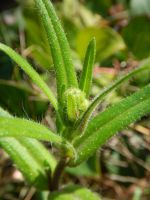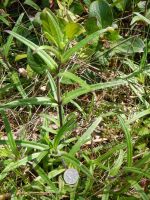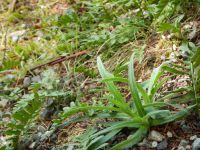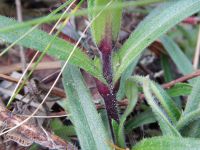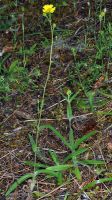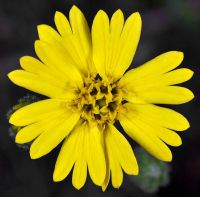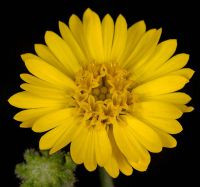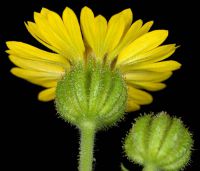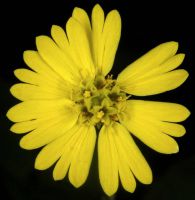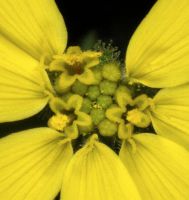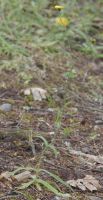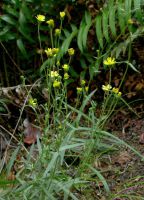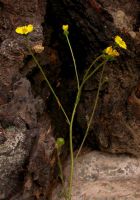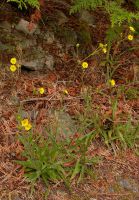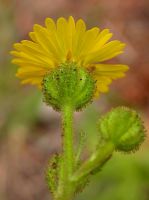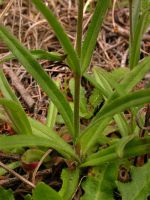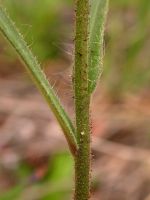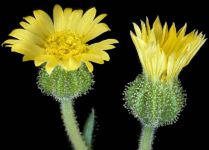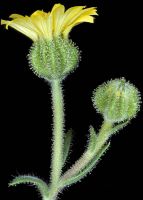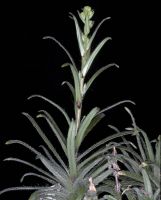Distribution: Occurring west of the Cascades crest in lowland western Washington; Southern British Columbia to southern California.
Habitat: Open woods and woodland edge, and thickets.
Flowers: May-July
Origin: Native
Growth Duration: Biennial, Perennial
Conservation Status: Not of concern
Pollination: Bees, flies, beetles, wasps
Biennial or short lived perennial from a short rhizome, 2-7 dm. tall, the herbage spreading-hairy, becoming glandular upwards.
Leaves linear-oblong or lance-linear, some of them with a few teeth; lower leaves 3-10 cm. long and 4-11 mm. wide, the others reduced, the middle and lower all opposite.
Inflorescence open, the lateral branches often surpassing the central; involucre globose, 4-6 mm. high, the flat tips of the bracts very short, its bracts in a single series and of equal length; rays about 8, up to 13, 5-10 mm. long, yellow, pistillate and fertile, their achenes enclosed by the involucre bracts; disk flowers sterile and yellow, enclosed in a cup of the united bracts on the receptacle; disk flowers with a pappus of several fringed scales.
Ray achenes flattened.
Publication: Trans. Amer. Philos. Soc., n. s. 7: 388. 1841.
PNW Herbaria: Specimen records of Anisocarpus madioides in the Consortium of Pacific Northwest Herbaria database.
WA Flora Checklist: Anisocarpus madioides checklist entry.
OregonFlora: Anisocarpus madioides information.
E-Flora BC: Anisocarpus madioides atlas page.
CalPhotos: Anisocarpus madioides photos.
USDA Plants: Anisocarpus madioides information.




